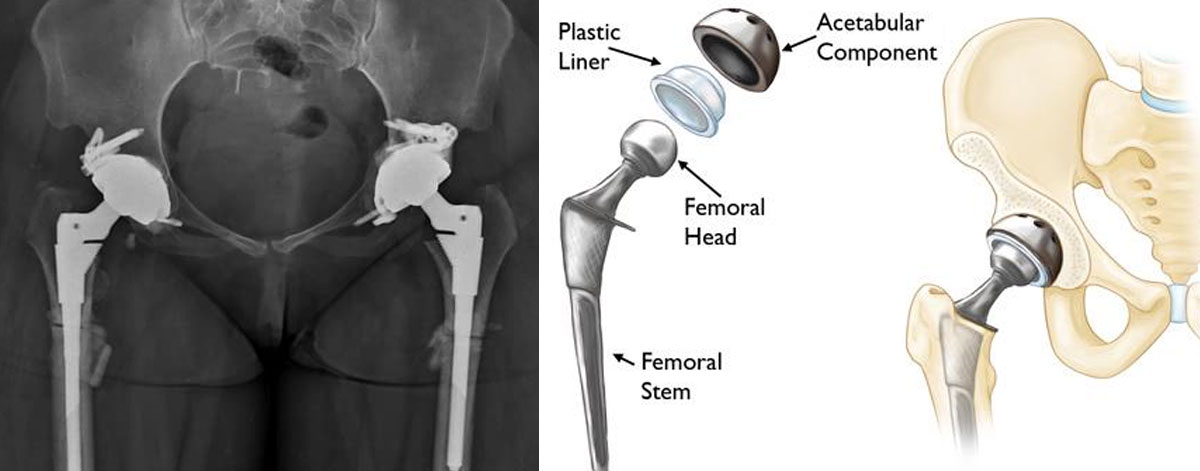Complex Hip Replacement
Complex hip replacement, also known as revision hip replacement, refers to a more challenging and intricate surgical procedure in which a previously implanted artificial hip joint is removed and replaced with new components. This type of surgery is performed when a primary hip replacement has failed or needs to be revised due to various reasons, such as:
- Aseptic Loosening: Over time, the artificial components of the hip joint may become loose from the surrounding bone, leading to pain and instability.
- Implant Wear and Tear: The prosthetic components in the original hip replacement may wear out, causing pain, inflammation, and limited mobility.
- Infection: In some cases, infections may develop around the hip implant, requiring its removal and replacement.
- Fracture: Fractures around the hip implant may occur, necessitating revision surgery.
- Dislocation: Dislocation of the artificial hip joint can occur, leading to instability and the need for revision.
- Periprosthetic Joint Infection (PJI): Persistent or recurrent infections around the hip prosthesis may require revision surgery to address the infection and replace the implant.
Complex hip replacement surgery is more challenging than primary hip replacement due to several factors, such as the presence of scar tissue, bone loss, and potential damage to surrounding structures. The surgeon may need to use specialized implants, bone grafts, or other techniques to address the specific issues encountered during the procedure.
The Complex Hip Replacement Procedure:
- Anesthesia: The surgery is typically performed under general anesthesia or regional anesthesia.
- Incision: The surgeon makes an incision over the hip joint to access the previously implanted components.
- Removal of Previous Implants: The old or damaged artificial hip components are carefully removed from the femur and acetabulum.
- Addressing Bone Loss: If there is significant bone loss around the hip joint, the surgeon may use bone grafts or special implants to reconstruct the bone and provide stability for the new prosthesis.
- Placement of New Implants: The new hip prosthesis is then inserted, typically consisting of a stem, a femoral head, and a socket. The type of prosthesis used depends on the patient's specific condition and the surgeon's judgment.
Do's for Complex Hip Replacement
- Follow Pre-operative Instructions: Adhere to your surgeon's pre-operative guidelines, which may include fasting instructions, medication restrictions, and hygiene protocols.
- Prepare Your Home: Make sure your home is safe and accessible for your recovery, with clear pathways and assistive devices like a walker or cane.
- Comply with Medications: Take prescribed medications, including pain relievers and antibiotics, as directed to manage pain and prevent infections.
- Keep the Incision Clean and Dry: Follow your surgeon's instructions on caring for the surgical incision to prevent infections and promote proper healing.
- Control Swelling and Pain: Use ice packs and elevation to control swelling, and take pain medications as prescribed to manage discomfort.
Don'ts for Complex Hip Replacement
- Overexert Yourself: Avoid putting excessive stress on the new hip joint during the early stages of recovery. Follow your physical therapist's guidelines and gradually increase activity as advised.
- Neglect Physical Therapy: Continue with your physical therapy sessions diligently to ensure a successful recovery and improve hip function.
- Ignore Signs of Infection: If you experience signs of infection, such as fever, increased redness, swelling, or drainage from the incision, contact your surgeon immediately.
- Engage in High-Impact Activities: Avoid high-impact exercises or activities that may put excessive strain on the hip joint.
- Sit for Prolonged Periods: Avoid sitting or lying in one position for too long to prevent stiffness and discomfort.

